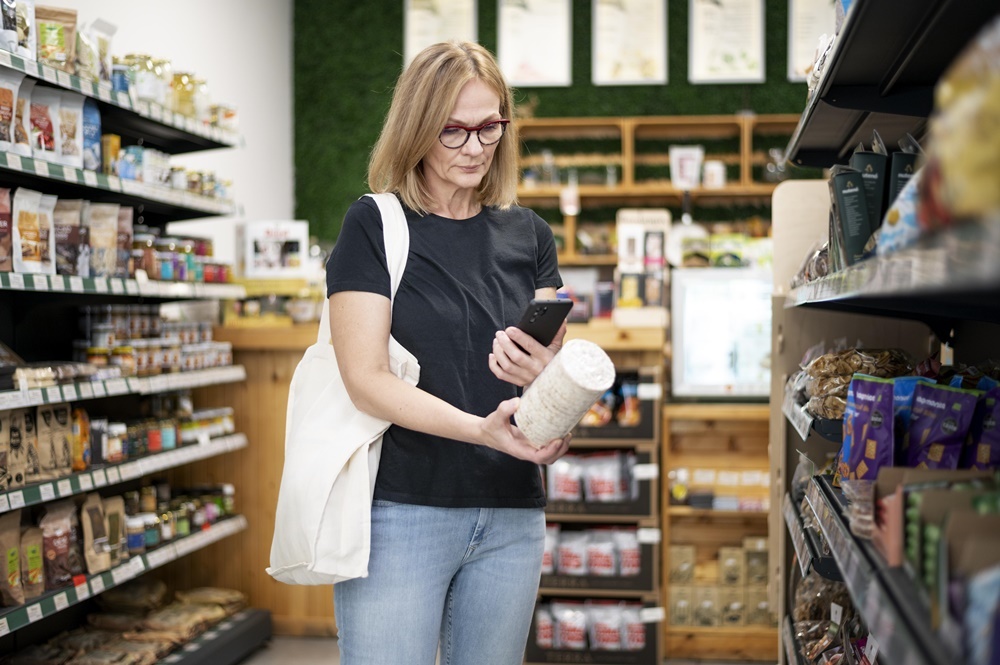Food labeling is an essential tool for informing consumers about the composition of the products they are purchasing. After all, without the correct labeling, it is impossible to know what each product that is marketed in supermarkets actually contains, right?
Outside Brazil, many countries also adopt strict regulations to ensure transparency and food safety.
In this article, we will learn about the changes announced in food labeling at the end of 2024 by the Food and Drug Administration (FDA) in the United States, highlighting the differences and similarities with what we find here.
US Has New Healthy Food Labeling Rules
Since the end of 2024, the Food and Drug Administration (FDA) – a body similar to Anvisa in Brazil – has defined new rules for the use of the term healthy on packaging. In fact, the agency has created a symbol that will help consumers identify the most nutritious types of food.
For a food to receive the healthy symbol, it must strictly comply with two criteria:
- Have at least one essential food group, that is, have fruits, vegetables, grains, dairy products, or proteins in its composition;
- Respect the FDA limits on sugars, sodium, and saturated fat that can be added to the product.
What does this mean in practice? Food such as olive oil, nuts, and salmon, for example, will be labeled healthy, while soft drinks, snacks, and cereals will be excluded from the list.
READ MORE: How Does Food Affect Consumers’ Mental Health?
And How Does Food Labeling Work in Brazil?
In Brazil, the National Health Surveillance Agency (Anvisa) treats the matter differently.
Since 2022, products with high sugar, sodium, and saturated fat content need to contain a warning sign on the packaging – the magnifying glass of high content.
In this way, we realize that, while the FDA seeks to warn consumers about food that is most beneficial to health, Anvisa does the opposite, highlighting those that bring harmful excesses to human well-being.
Consumers Worldwide Are More Alert to Food Labeling
Nowadays, consumers are increasingly aware of the impact of food choices on health and well-being.
Growing concern about chronic diseases such as diabetes, obesity, and hypertension has led people to pay more attention to the labels of the products they buy.
In this case, transparency in information, including the source of ingredients and health benefits, has become a decisive factor at the time of purchase.
This behavior reflects a significant change in consumer behavior, increasingly seeking natural, sustainable, and nutritious options.
ALSO READ: Soluble Fiber and Apple Powder: A Good Combination
Increase Your Sales by Offering Healthier Products to Your Brand’s Consumers
To meet this growing demand, companies must adopt an effective strategy: the use of natural inputs, such as fruit powders, dry extracts, and fibers.
These ingredients offer a practical and tasty way to make food healthier, without compromising taste or convenience.
By replacing artificial additives with natural alternatives, brands increase the perception of product quality and meet the expectations of consumers who prioritize a cleaner and more balanced diet.
Frootiva® Co has a complete line that will help your brand have healthier products and, consequently, sell even more. These are fruit and vegetable powders, in addition to dry extracts.
At Frootiva® Co, the process of removing water from fruits, vegetables, and plants (Spray Drying) allows the input to maintain all the properties and nutrients of the food, including its flavor and color.
To learn more about the products and work done by Frootiva® Co, contact us by phone at 55 11 4765-0732 or fill out the form.


0 Comments